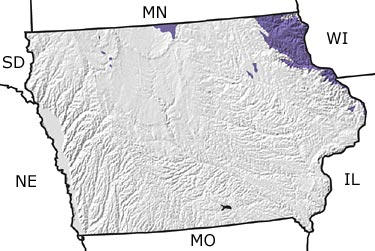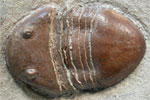Paleontology and geologyDuring Early Ordovician time, Iowa stood at the edge of a warm, shallow sea. Interplay between this sea and its coastline resulted in alternating deposits of carbonates and sandstones. Algal remains are common fossils from this time interval. The sea retreated briefly, and then advanced to the north, well past Iowa. Hence, depositional environments in Iowa became successively deeper. The limy sediments deposited in this sea became the limestones and carbonates now exposed in the northeastern part of the state. The sea hosted a diverse and luxuriant marine fauna, including algae, clams, snails, nautiloid cephalopods, corals, trilobites, and bryozoans. The rock units also contain thin, but widespread, bentonites (altered volcanic ash beds), indicating volcanic activity somewhere in the region. By the end of Ordovician time, the seas had retreated from Iowa. |


